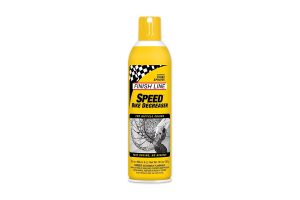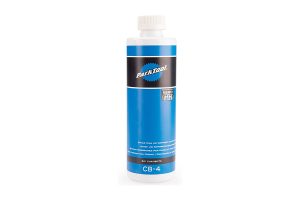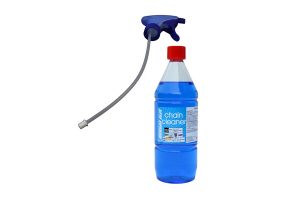The 6 Best Bike Chain Cleaners and Degreasers in 2019
You probably already know that a dirty bike chain will accelerate the wear of not only the chain but also the entire drivetrain.
So, what’s the best way to clean your dirty bike chain?
A bike chain cleaner or degreaser.
But the thing is, there are so many bike degreaser products out there today. Should you get a bio-degradable or non-toxic one?
And not forgetting that they all come in different forms of packaging, which only make things even more complicated! On this page, we’ll take a closer look at the various things to consider in a bike chain degreaser and also some of my favorites.
A Quick Glance : Our Favorite Bike Chain Degreasers
Value for Money Picks
Finish Line Speed
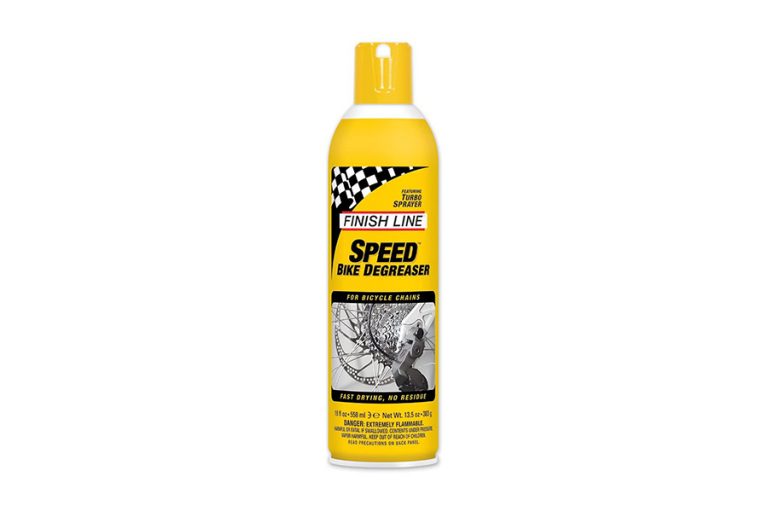
This non-toxic bicycle degreaser is formulated from orange peel as well as soy-based extracts. Whether you’re cleaning rubber or plastic bike parts, this biodegradable cleaning solution is safe. For the less difficult cleaning jobs, you can dilute this formula with water.
This cleaning formula usually has a low surface tension for rigorous penetration into all bike areas. The degreaser’s manufacturing technology allows it to break down as well as remove oil, wax, and grease that’s stuck on your bicycle chains.
- Pros : Very efficient especially for old grease at hard to reach places.
- Cons : Powerful spray that could splash onto your eyes. Wear protective glasses.
Simple Green
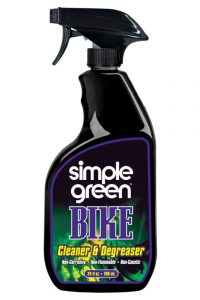
This specially-formulated chemical cuts through all the tough mud, grime, grease, mud, and trail soils without corroding your bike’s delicate components.
You could use this degreaser on all your bike parts, including plastic, rubber, metal, any painted surfaces, and delicate accessories like derailleurs and chains.
This bike degreaser is specially formulated to clean and maintain a wide range of bikes, from high-performance racing to casual cruising and mountain biking. This formula is non-flammable and non-corrosive, so you can clean with confidence.
- Pros : Suits all types of materials as it’s non-corrosive.
- Cons : Only available in 1 size – 24 fl. oz.
Heavy Duty Picks
Morgan Blue Chain Cleaner
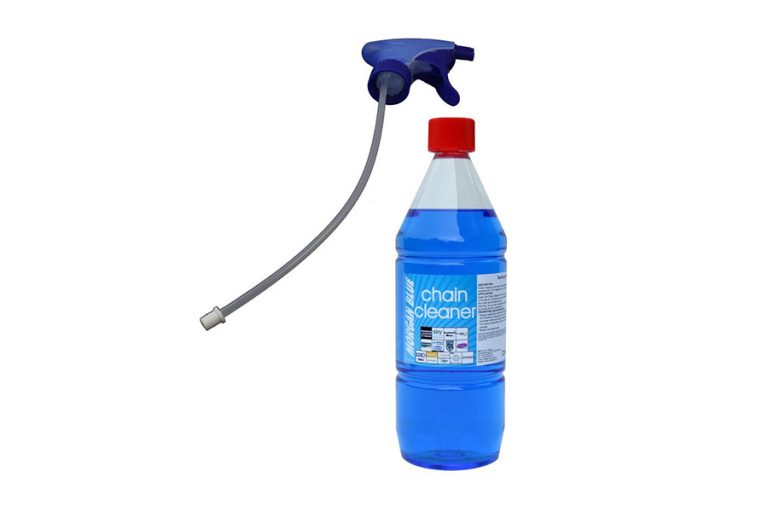
The Morgan Blue chain cleaner is an active degreaser ideal for drivetrain and chain components.
It’s used by a number of professional cycling teams since it complies with the highest environmental standards in addition to ensuring smoother shifts, higher performance, and extended drivetrain life.
Besides being plastic and rubber safe, this bicycle chain degreaser contains active components that induce a fast and profound cleaning. Apply this chain cleaner on the front gears, rear gears, and chain. You are advised against using this chemical on the fork and frame.
- Pros : Works quickly and effectively on both chain and cassette.
- Cons : Spray nozzle is prone to break.
WD-40 Bike Degreaser
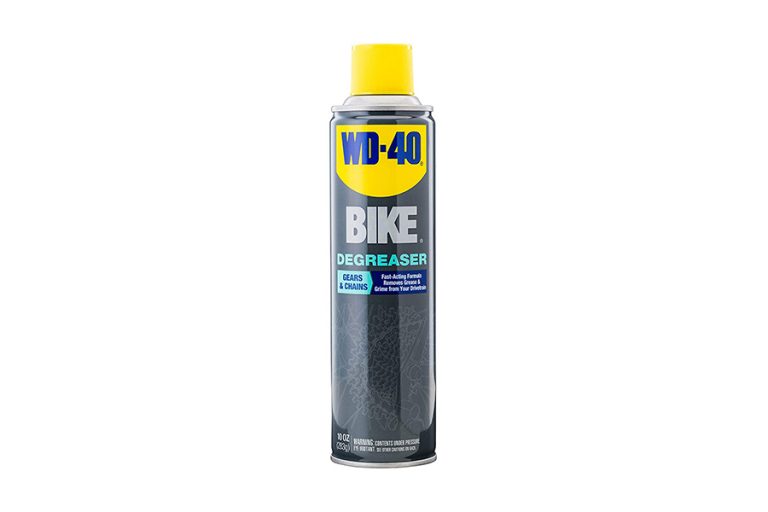
Before WD-40 offered a product specifically for bikes, many cyclists were already using this well-known lubricant for degreasing and lubing their drivetrain. WD-40 paid attention and has now perfected its formula specifically for bike degreasing.
This bike degreaser foams up out of the can to cling to your drivetrain parts, allowing the degreaser to penetrate and do its job fully. It can cut through stubborn grime without the use of citrus, which can damage some bike parts.
- Pros : Good value for a heavy-duty degreaser.
- Cons : Only available in 1 size – 10 fl. oz.
Biodegradeable Degreaser Picks
Park Tool Bio Chainbrite CB-4
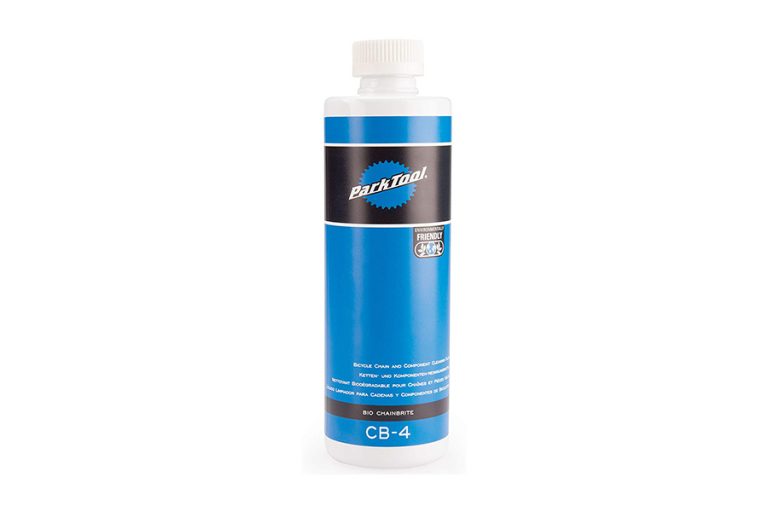
This biodegradable bike cleaning fluid is a natural, plant-based degreaser meant for a general-purpose bike degreaser. The Bio Chain Brite degreaser should not be diluted with water, and it has no adverse effects on plastic, rubber parts, or alloy.
It’s pretty much straightforward to use this degreaser since you only have to pour it on your bike parts and scrub off the grime using a bike cleaning brush. This bike degreaser comes in a 16 fl. oz. bottle so it’s convenient to have in your toolkit.
- Pros : Very easy to use and non-corrosive.
- Cons : Expect to pay slightly more, because it’s. Park Tool.
Muc Off Bio Drivetrain Cleaner
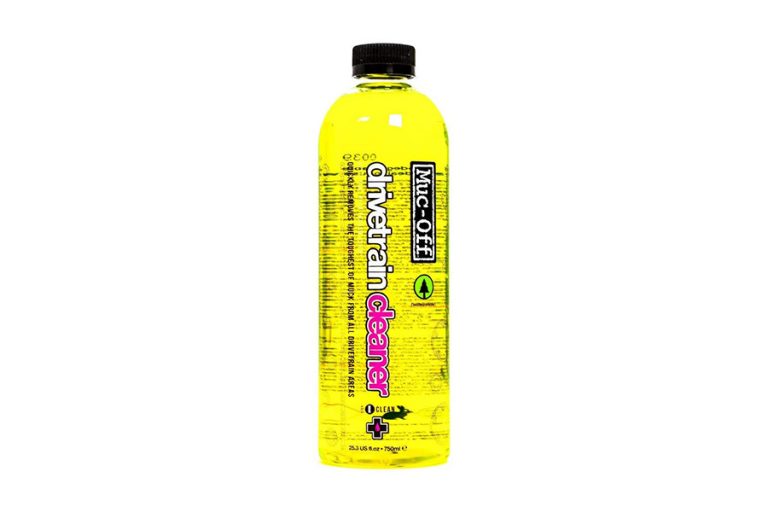
Muc-Off is no stranger when it comes to bike cleaning products.
The Muc-Off Cleaner is a complete bike degreasing solution that could be sprayed directly or poured onto the derailleurs, cassettes, and chainrings to clear your drivetrain in less than a minute. This drivetrain cleaning solution is completely biodegradable and safe for metal, rubber, and plastic.
From wax to chain oil residue, this effective grease-cutting formula removes everything in seconds. This degreaser also
- Pros : Comes with a trigger spray for easy application.
- Cons : Expect to pay slightly more.
Fast Action Degreasers
Muc Off Dry Chain Degreaser
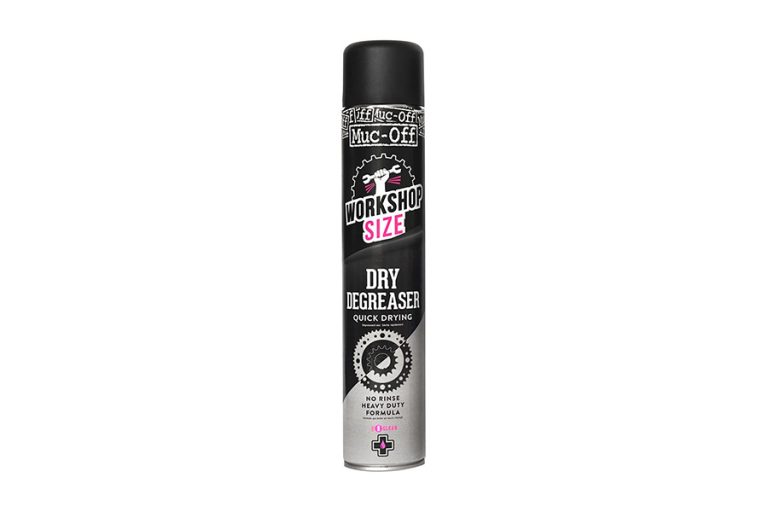
Yes, the company name is certainly attention-grabbing, but does this chain degreaser really do what it says it does? Muc-Off says this degreaser offers maximum grime elimination.
The process is simple. Shake the can, spray it on the chain, agitate the chain to shake off contaminants, and you’re done. The lube dries to a zero residue finish, meaning after cleaning off the grime, it evaporates to nothing, leaving your chain ready for lubrication.
The secret is in the solvent, which is a heavy-duty degreaser that cuts through the toughest grime.
- Pros : Non-messy and easy to use.
- Cons : Doesn’t last as long as liquid-based degreasers.
Pedro's Oranj Peelz
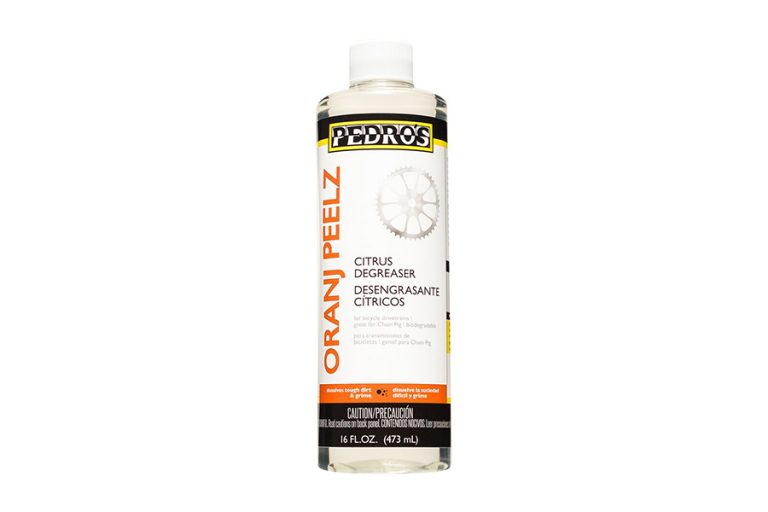
Pedro’s has been turning out quality lubricants and degreasers since it was founded way back in 1989. Since then, its Oranj Peels degreaser has been an industry standard when it comes to bike cleaning. And it still is today.
This citrus degreaser cuts quickly through grease without damaging your bike’s paint finish. It’s also easy on the environment, so you can rest assured you’re staying green when cleaning that chain in the front yard.
This classic bike chain degreaser comes in a 16 fl. oz. bottle, which is enough to cover numerous cleanings.
- Pros : Non-corrosive and environmentally friendly.
- Cons : Stock availability might be limited.
Non Toxic vs. Bio-Degradable Degreasers
The concept of non-toxic and biodegradable degreasers has sparked a heated debate for one reason; biodegradable isn’t a guarantee for safety.
Quite often, these two aspects do not go together despite the misleading statements by marketers.
Biodegradable items could still be toxic and pose a hazard to the user and the environment at large. In fact, any degreaser claiming to be completely organic should be investigated further.
In addition, the non-hazardous sticker on the degreaser packaging doesn’t make it safe either. This is a trick often used to avoid transportation restrictions, particularly in airplanes.
While there will always be conflicting opinions about this issue, it is your responsibility to take up the safety button. If you’re cleaning your bike on the grass, be sure to use a degreaser marked as non-toxic and biodegradable.
But, if there are no such labels on your cleaning solution, be sure to use protective gear (gloves, sunglasses, and nose masks) to avoid coming in contact with these chemicals.
Types of Packaging
Various degreaser brands often adopt different methods of packaging, which depend on the corrosive levels of the cleaning solutions.
In addition, the mode of application and transport also determines the type of packaging.
Here are the common types of bike degreaser packaging.
- Spray bottles. This is the most popular packaging option for cyclists who want to have a cleaning solution on-the-go. Most of the degreasers that come with this packaging are often water-based and less corrosive. This packaging is ideal for degreasers that are water and foam-based.
- Aerosol. This packaging option is often used for flammable degreasers since the metal casing will not burn easily. Aerosol degreasers are usually small and easy to store in your bike maintenance tool kit. The standard packaging size for these degreasers is 500ml and 250ml.
- Cans. Degreasers are also packaged in cans. This option is popular with heavy-duty bike cleaning solutions that require dilution with water.
- Bulk. Bulk degreaser packaging is often used for industrial-grade cleaning solutions that are highly toxic and are common in large bike shops and bike assembly plants. Degreasers are packaged in drums of 50 liters.
What are Chain Degreasers Made of?
Chain degreasers come in handy when you want to break down dirt, grease, and grime from your drivetrain.
To achieve this, a collection of chemical compounds come into play to help collapse grease and oily compounds from metals, plastic, rubber, and other materials.
Although some products might add more ingredients to their formula, the contents responsible for the clean-up and break down of grease and dirt are often the same among brands.
Here are the main degreaser active ingredients that are responsible for cleaning as well as breaking down oil compounds, dirt, and grime.
- Sodium Carbonate is one of the most common ingredients in degreasers and often used in powdered detergents. This ingredient works to breakdown oil and grease, and remove any lubricants from objects and materials.
- Sodium Meta Silicate is highly alkaline and enables bike degreasers to break down all the fatty acids present in greasy products. This compound could also act as a water softener and proves to be a strong cleaning agent when diluted in water. Sodium metasilicate is also used in phosphate-free powder and liquid detergents to remove oil and dirt from hard substances and fabrics.
- Sodium Tripolyphosphate. For most bike degreasers, sodium tripolyphosphate serves as a base in which to regulate and combine other compounds in addition to acting as a pH buffer. This ingredient evens out the friction between other ingredients in degreasers, which could otherwise result in a chemical reaction. And apart from working to deter grime and grease, this ingredient boosts the cleaning ability of other ingredients.
- EDTA (Ethylenediaminetetraacetic). This active ingredient works as a hard water reliever and binding agent. When it’s added to water, the compound aids in stabilizing other degreaser compounds for an effective cleaning process.
Frequently Asked Questions
1. How often should I clean my bike chain?
Ideally, you want to clean your bike chain when the gunk starts to accumulate.
This can vary depending on various factors such as type of chain lubes used, riding conditions such as wet, dry, dusty, or a combination of all of them.
2. Can you use any degreaser on a bike?
I’d recommend using specific chain degreasers. While a general degreaser would work and do the job, you wouldn’t know how corrosive and penetrative the chemicals are towards your chain, chain links, and the inner plates.
3. Is it OK to use WD-40 on the bike chain?
WD-40 (the standard one) can be used as a degreaser but not a lube on a bike chain. However, it’s not as effective as a chain degreaser, especially for the stubborn gunks.
Recently, WD-40 (the brand) starts manufacturing a bike chain degreaser.
4. Can you use dish soap to clean a bike chain?
Yes, you can. But bear in mind that it won’t be as effective as a chain degreaser. You can use the dish soap to clean the chain after degreasing it.
Author Recommended Reads

